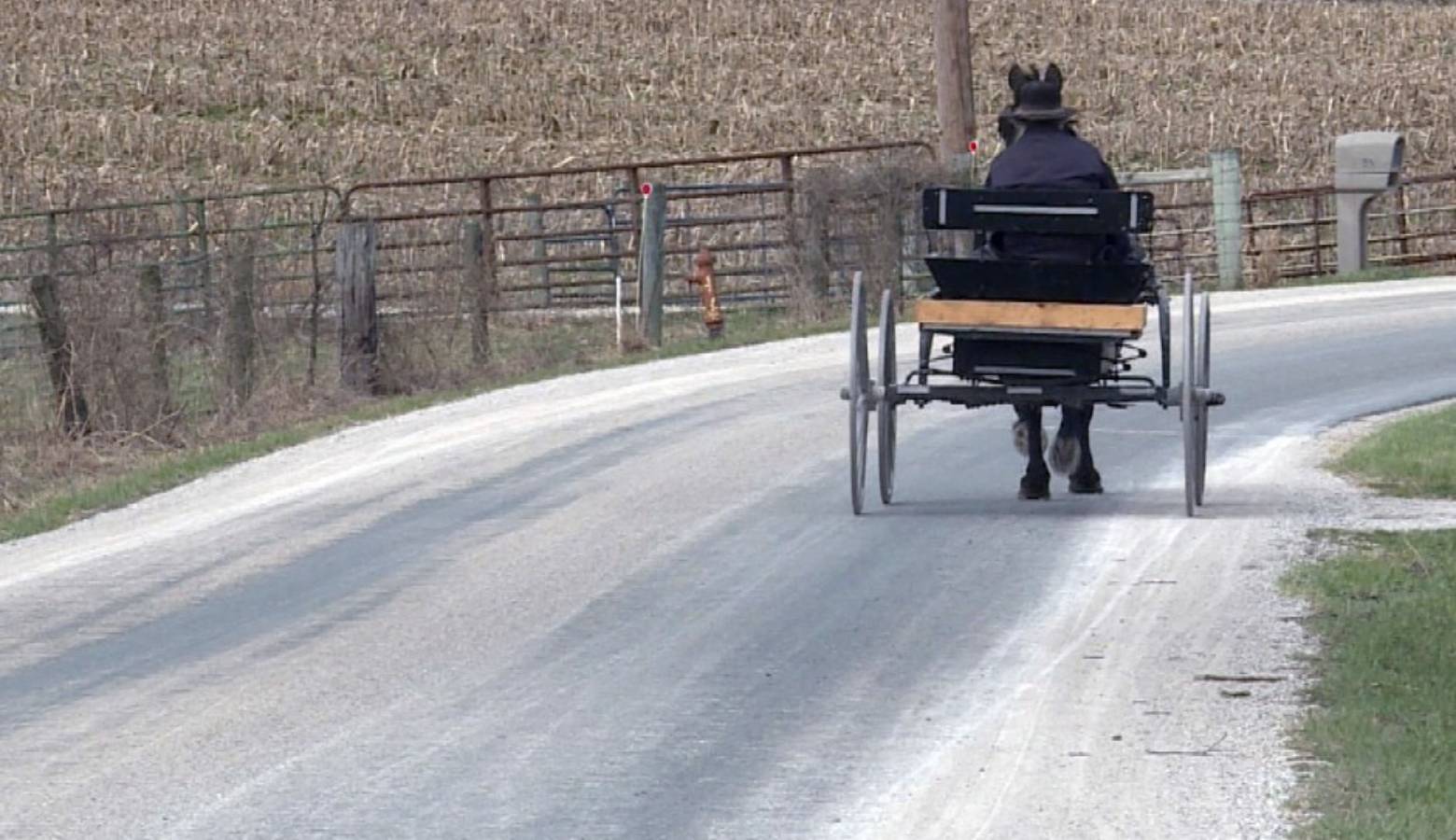Hoosier Counties Dealing With Roads Damaged by Horseshoes

It’s pothole season for all of Indiana. But for several Indiana counties, that’s just some of the major road damage to repair. Some are spending hundreds of thousands each year on wear from horseshoes used by Amish communities. As Indiana Public Broadcasting’s Barbara Brosher reports, that presents a unique challenge.
As you drive through Elkhart County, it’s not unusual to pass several horse-drawn buggies on the road.
“We sold about 3400 buggy permits last year.”
That’s Elkhart County Commissioner Mike Yoder. We’re standing on the side of a county road that has a long line of large divots spanning the entire block. And, when a car or buggy goes over that broken pavement, its sounds just as bad as it feels.
Dixon says the abrasive material the Amish use on their horseshoes causes what are called horse troughs to form in the roads. When water gets inside, freezes and expands, it breaks the pavement up.

Amish farriers often outfit horseshoes with stronger materials, or even spikes, during winter months. (Photo: Steve Burns)
I spoke to several members of the Amish community, but they didn’t want to do recorded interviews. One of them specializes in horseshoes and says the abrasive material is necessary to prevent horses from slipping on wet roads. It’s especially important in this part of the state, which gets a significant amount of snow every year.
But, Yoder says at least half of Elkhart County’s roads have some sort of horseshoe damage. Paying to repair those roads is expensive. The costs are only partially covered by the county’s $55 buggy plate fee.
“LaGrange county is up to $100 a buggy and I think we are going to increase our plate as well. But that generates maybe $140,000 to $150,000 a year. And when we repave a mile of road, that’s close to $100,000. So we can’t do a lot of work.”
Four and a half hours south of Elkhart County, another community is facing a similar dilemma.
Orange County is home to a smaller number of Old Order Amish.
Richard Dixon is president of the Orange County commissioners. He says horseshoe damage has always been a problem, but recently it’s gotten worse.
“With the new Indiana crossroads grants, we’re doing a lot more hot mix asphalt paving. And I think the damage is even more pronounced on the hot mix asphalt.”
County leaders here met with members of the Amish community to come up with solutions that would work for both parties. The Amish agreed to use less abrasive horseshoes for half of the year, and be allowed to use heavy duty versions during the remaining months.
“We’ve talked about rubber shoes. The problem with rubber shoes is they don’t last long, they don’t wear well.”
Back in Elkhart County, Yoder says leaders could consider similar options to help reduce wear and tear on roads. But additional restrictions come with a different set of challenges.
“The problem with regulating horseshoes is that somebody has to enforce it. And our county sheriff has been reluctant to pull over buggies and lift a horse’s foot to check on the horseshoes.”
Yoder says the Amish are such a big part of Elkhart County, people living here are used to their customs and traditions.
He sees this as just another part of learning how to co-exist.

